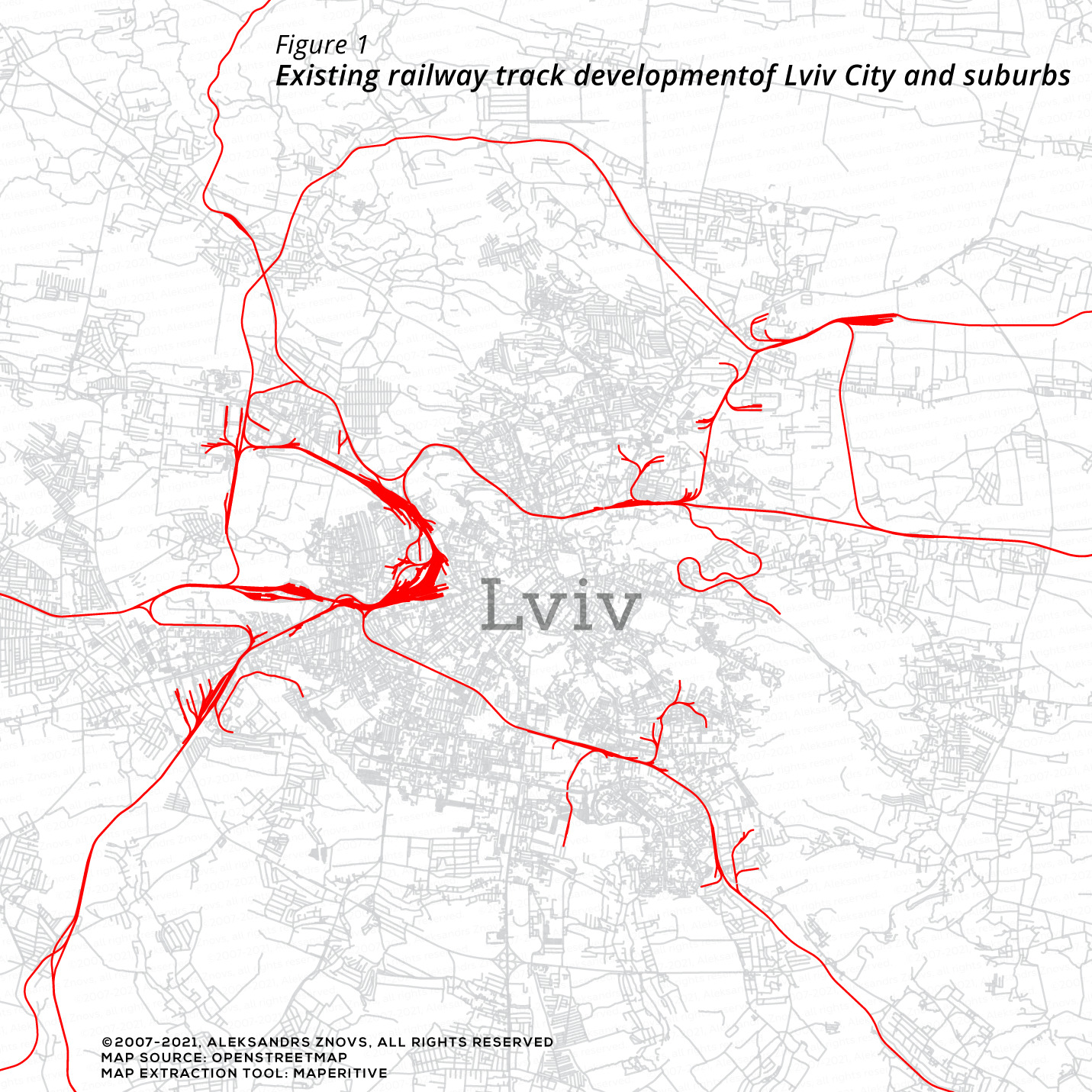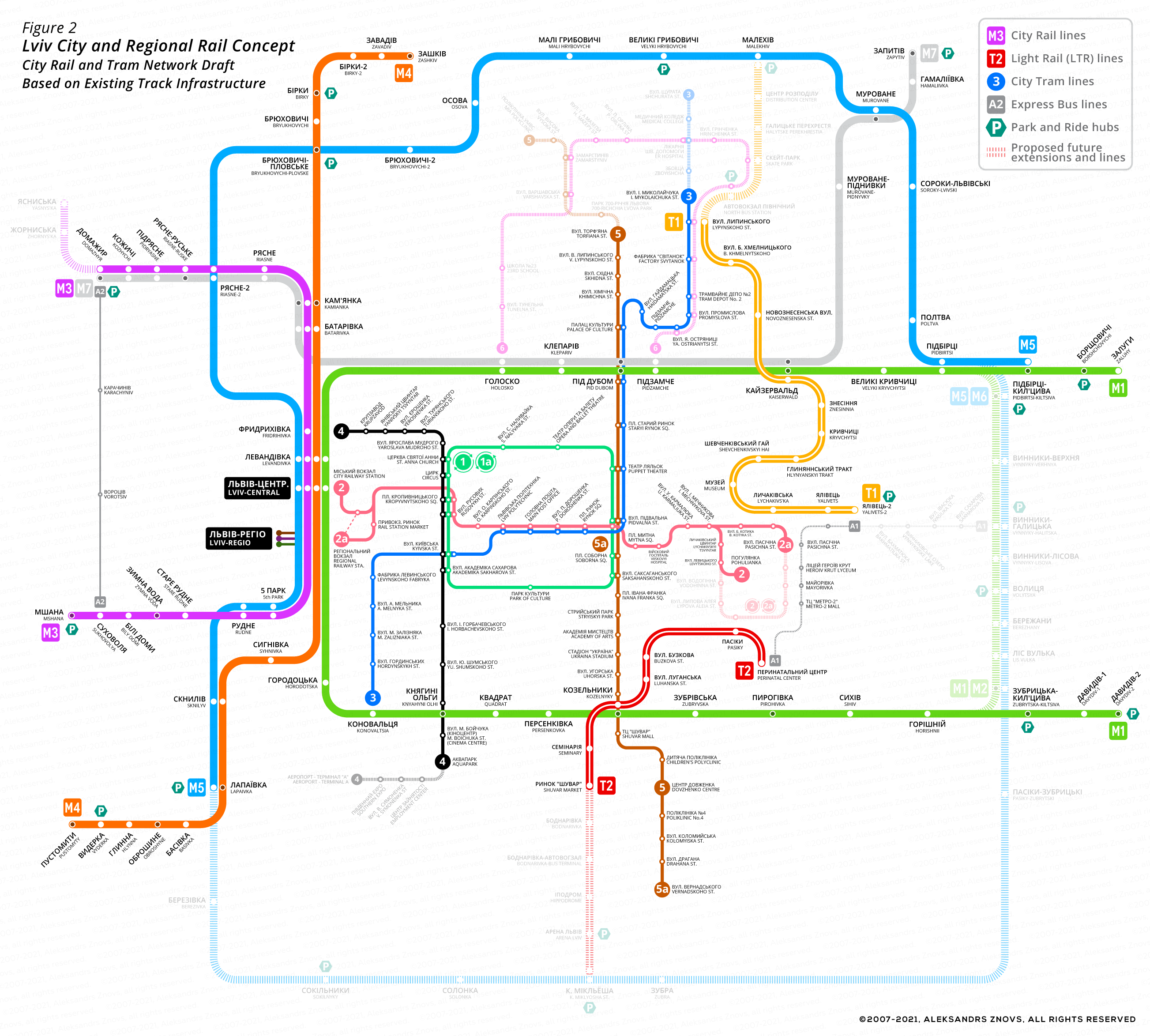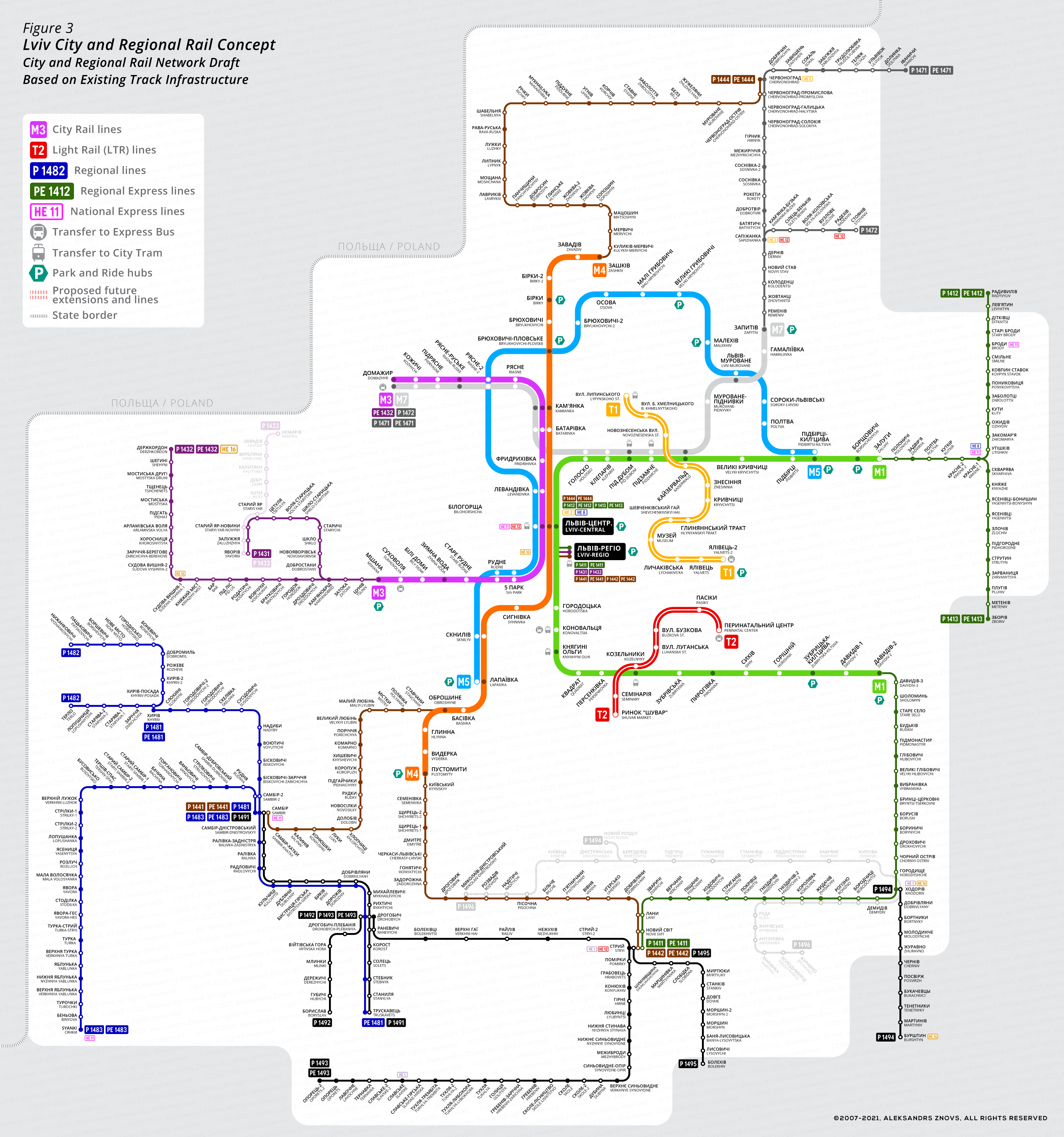Criticism
We can find the hundreds of cities or whole conglomerations with weakly used almost ready-to-use railroad webs around the world. Part of them are still waiting aside for their miracle time for a simple reason – there are not enough [inhabitants] money. The majority of railway lines left to devastation because of inappropriate politics of development by local and even state authorities. This situation, in particular, we can observe in post-soviet countries, sadly Ukraine is among them.
The Ukrzaliznytsia (Ukrainian State Railways) is a government-owned company with 22,300 km of tracks and plenty of rolling stock units. Being the 13th largest in the planet, the situation of this rail operator is below any critic. Due to very few investments, both the infrastructure and rolling stock are morally and physically out of date, which causes the increase of railroad accidents, route closing and the dramatical drop-down of service level.
In such a hopeless situation the Ukrzaliznitsia has diverted the fund to its most profitable freight unit, pushing passenger services to the second place or even further. This philosophy caused the massive redirection of passengers to road transport resulting in the congestion of all bus operators and overcrowding of the road infrastructure in the country.
The mighty trigger
I already told you about decreasing the number of routes of intercity trains in Ukraine. After the watching of countless YouTube videos and reading plenty of articles about the poor public transportation situation in the city of Lviv, located on Western Ukraine, I decided to offer my vision of how to build the effective suburban rail network for this incredible ancient city. As you probably suppose, I will show in my traditional way – using my route diagrams. 😉
Lviv has its tram network, which already undergoes dramatical changes to [I hope] the brighter side of reality. I am going to look a bit more outside the frame and take into account both the existing tram network and possible suburban rail.
Firstly I tried to find all active, rarely used, abandoned, rail tracks including the access ways to enterprises, plants etc. Let’s take a look at what we have to date (please click on image to enlarge, then right-click to view or download the full resolution file):
As seen on Figure 1, the city has an incredible rail track development, which can serve as the basis to create a full-fledged, well-integrated transit system in synergy with the existing tramway network, which also can be easily optimized. Isn’t it beautiful?
The first stage
The first stage could include the following substages:
- Extension of tram lines, building of new tram lines;
- Renovation, conversion, building new stations and heavy rail platforms;
- Planning of new regional line network web around the city to extend city rail services;
- Changing the purpose of Lviv central and Suburban stations;
- Connecting some city rail stations with densely populated areas with express bus routes.
Visually the whole picture would be like this:
As we can state the whole city rail (exurban, suburban) network will cover the most territory of the Lviv and inhabited areas around it. The only issue is to choose the rolling stock with greater capacity and to organize the effective traffic schedule. Some additional routes of express-bus (A1, A2) can provide shuttle services to connect railway stations among themselves and with some residential areas.
Lviv central station can serve as the central knot point of four city rail routes (M1, M3, M4 and M6 – let’s use letter M as for “міський” (urban) in Ukrainian) and besides for intercity, national express, international and regional trains. The nearby suburban railway station (Приміський вокзал in Ukrainian) will serve mostly for regional trains. Both nearby stations can be connected with a 250 m long underground tunnel with travelators (moving walkways) for passenger comfort. Otherwise, the distance between the stations is 700 m long, which is quite uncomfortable for passengers to use. Optionally, instead of building the pedestrian tunnel, the tram service between two stations can be an option. It would use the existing tramway track infrastructure and one shuttle-tram.
Additionally, I decided to show my ideas according to the city tram network optimization. The main target which I was guided by is to force passengers to accept the principle of effective use of the tram system, which consists of switching the routes during the trip, but not to claim city authorities to create a transit system with a bunch of unnecessary lines that overload traffic without doing useful work. Of course, the transport company must also provide a convenient timetable so that passengers can quickly and comfortably switch between lines. Without that, I added some ideas of line extending, as well as entirely new lines that could pass through the densely populated areas of the city, relieving the streets from unnecessary road traffic. Of course, not all ideas can be implemented as it is drawn on paper, nevertheless, I believe that most of the ideas presented can be implemented.
The second stage
The second proposed stage can be split into the following steps:
- The building of Small City Ring along the bypass road (M1/M2);
- The building of Big City Ring along the bypass road (M5/M6);
- Adding regional lines as the extension of existing city lines;
- Adding express services to regional lines;
- Adding the new peripheral regional routes;
- Conversion of two inner-city heavy rail tracks to LTR lines (T1 and T2).
The express service within the town borders can be provided by regional trains serving the whole Lviv Region (Lviv Oblast). Regional trains would serve literally as an extension of city lines and would stop only at few most crowded stations within the Lviv residential area and at all stations onwards. Regional express trains would have no stops within the city borders and would stop only at main regional stations. Please take a look at whole regional network:
I would like to focus on the idea to double city lines by regional lines. In case of failure of any city trainset, the service can be provided by the nearest arriving regional or even express train or in some cases vice versa.
Both Lviv City Rail Rings (M1/M2, M5/M6) could be helpful to avoid overcrowded stations or city centre during the rush hours. Passengers arriving from the suburbs and whole region will be distributed evenly along with the other ways.
The idea to integrate different level rail services between each other is not something new. Similar schemes successfully used in most countries and show excellent results. The system can be efficient only if the traffic will be regular, with possibly shorter intervals and adaptive schedule for all passenger demands during the day. Let’s take a look to the imaginary train schedule of most crowded (in our case) Lviv Central Station:
Probably the minimum train interval during the rush hours in case of a large influx of passengers can be 5 minutes. Even in this case, this would not be difficult to add other trains (regional, intercity or freight) to the schedule. Longer and slower freight trains with more than 5-minutes-passing-time can be diverted into the off-peak hours.
Afterwords with the [brass] hope in my pocket
Of course, the project’s success is sensitive to the quality of infrastructure and the appropriate number of high-quality rolling stock, what is the issue, the big and very expensive issue as we know. Showing the efforts to gain better results in the fight against corruption, ineffective use of funds and bureaucracy will attract potential private and governmental investors both local and foreign. Let’s make Ukraine great again!
Title image credit: besthqwallpapers.com













